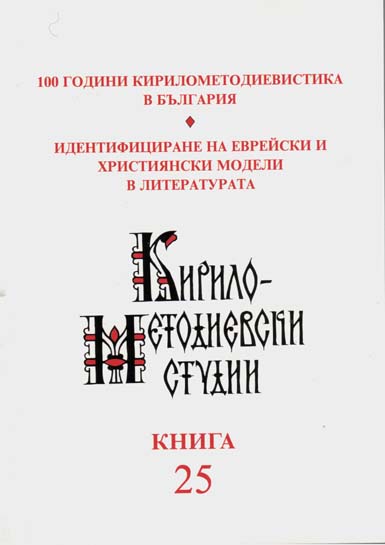Университетский Liberal Arts курс „Библия как литература": к более адекватному пониманию автентичного культурного контекста
A Liberal Arts The Bible as Literature: Toward a More Adequate Interpretation of the Genuine Cultural Context
Author(s): Serguey IvanovSubject(s): Christian Theology and Religion, Language studies, Cultural history
Published by: Кирило-Методиевски научен център при Българска академия на науките
Keywords: Bible as Literature – A Liberal Arts
Summary/Abstract: Any textual corpus is subject to manifold scholarly analyses from varying observational positions. The “western” Bible (a final construct of Late/Christian Antiquity) is viewed through the prism of its historical, geographical, etc. trustworthiness, as a source of knowledge about local ideological (cultural, religious, socio-political) peculiarities. The Bible as Literature (a one-semester general education, 300-level course in “literary analysis” and “intensive writing” modes of inquiry) treats its object as a literary entity with an immeasurably profound influence on historical developments in a huge portion of humanity over the last two millennia. The Bible’s texts reflect a vast and abstract semiotic universe in the domains of the European/Judeo-Christian culture, shaped over time in the internal intellectual symbolic (“spiritual”) life of innumerable individuals, all with their idiosyncratic and shared world views. By the mid 1st century AD, the Septuagint was transferred into a new and rather unpredictable linguistic and cultural context; new semiotic assumptions inevitably led to a new shared imagery and in due course turned into myths and religious teachings, doctrinal statements, as well as metaphors to fill in textual lacunas. This new reading of the Old along with the newborn New Testament generated a heterogeneous basis for more doctrines and juridical codes, imaginings, and at long last created a new civilizational pattern. For a modern academic researcher, no longer curbed by obligations to demonstrate loyalty to the exclusively religious exegetic tradition, it generates many inspiring and revealing challenges. Specifically, this means (a) to identify and explain adequacy/inadequacy between its genuine symbolic and commonly Jewish pattern, the Ancient Biblical Hebrew one of the early 1st cent. CE, however rooted in one idiosyncratic rabbinical interpretation, and (b) to determine what has been developed by or ascribed to its “Hellenistic” expression. The semantic loss due to the application of eisegesis instead of exegesis (the latter being a generally relevant hermeneutical-methodological foundation of textual interpretation), which has critically affected meanings, imagery, allusions, tastes and presuppositions of the genuine context, is briefly defined and illustrated, aiming at an academically more adequate, educative, and contextual explication of the Bible’s literary content.
Journal: Кирило-Методиевски студии
- Issue Year: 2016
- Issue No: 25
- Page Range: 489-504
- Page Count: 16
- Language: Russian
- Content File-PDF

